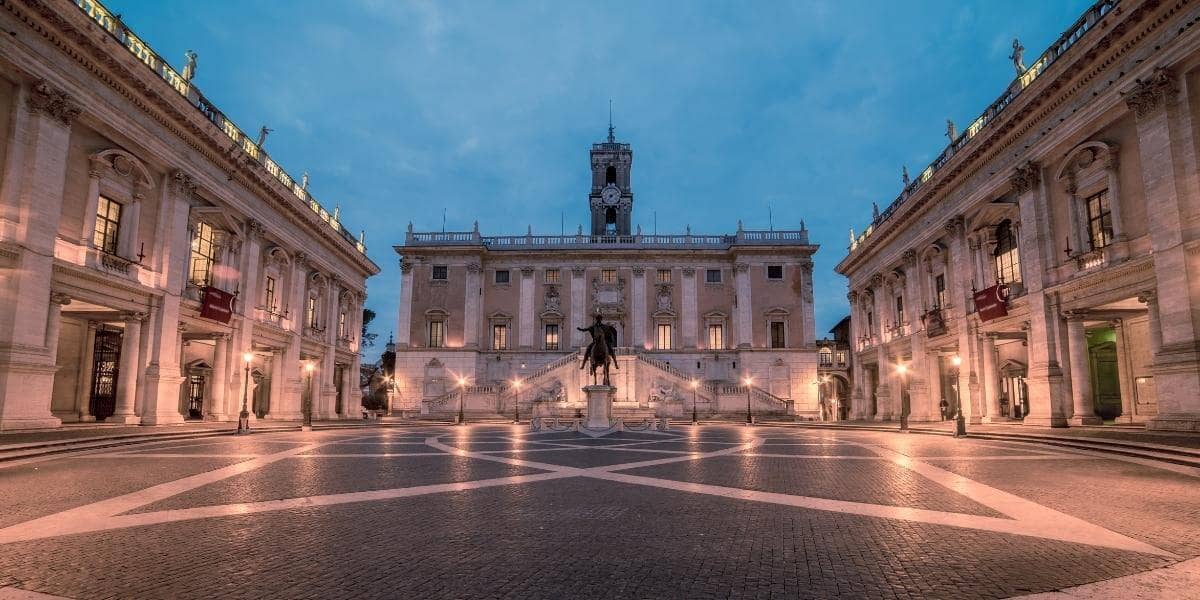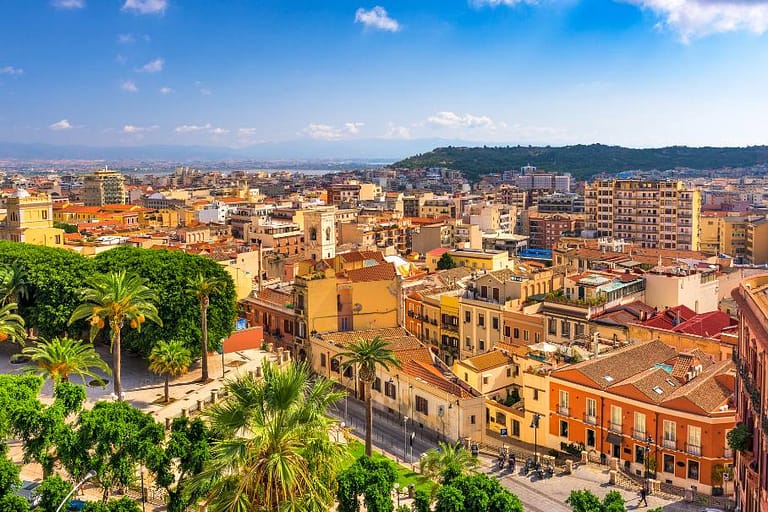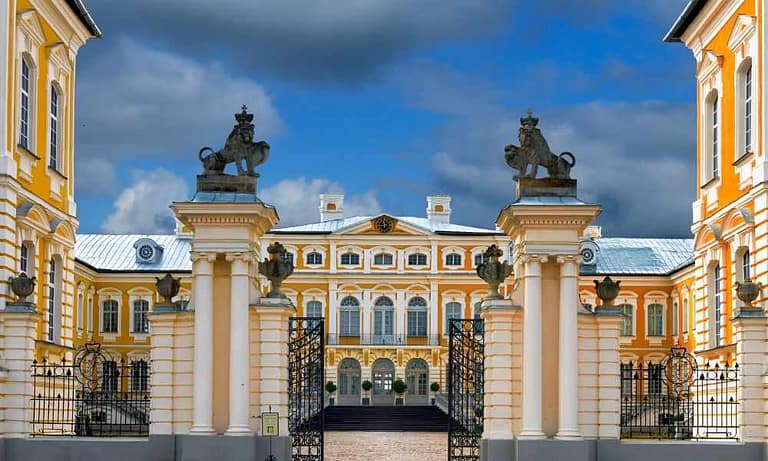The spectacular Capitoline Museums in Rome
While all of Rome is technically an outdoor museum, the city is home to several impressive museums with extensive art collections. One of the largest and most impressive is the Capitoline Museums complex on top of the Capitoline Hill in the heart of Rome. If you’re a museum lover like me or simply want to learn more about the history of Rome, this is the place to visit.
The Capitoline Museums, or Musei Capitolini in Italian, is a single museum dedicated to preserving the memory of Ancient Rome. It is one of the world’s oldest museums and home to the city’s finest collections of Roman sculptures. Like many other museums, this one is housed in two separate buildings that are works of art in themselves.
Affiliate Disclosure – This post contains affiliate links. If you make a purchase through these links, I may earn a commission. This doesn’t affect your purchases or any fees you may pay for the product or service. Read more in my DISCLAIMER.
Where are the Capitoline Museums?
The Capitoline Museums are located on the Piazza del Campidoglio, on top of the Capitoline Hill, just south of Piazza Venezia. The complex is behind the iconic white monument dedicated to Vittorio Emanuele II.
The simplest way to access the Capitoline Museums is by climbing the massive steps known as Cordonata, from Via del Teatro di Marcello. Michelangelo designed these wide steps, presided by enormous statues of Castor and Pollux, the Piazza Campidoglio, and two of the buildings flanking the two sides of the square during the 16th century.
A brief history of the Capitoline Museums
In 1471, Pope Sixtus IV donated a group of bronze statues to the Roman people. These statues formed the core of the collection. Subsequent popes added additional works, expanding the collection with art and sculptures.
In 1734, Pope Clement XII declared the museum open to everyone, making this the first museum open to the public. Many items housed here were moved from the Vatican museums over time, while others were purchased specifically for the museum. Archeological finds in later centuries were added to expand the collection.
Today, there is an exhibition about the Capitol’s pre-Romand days. In addition to several Etruscan artifacts and tombs, there are several renderings of what the Palatine Hill and other hills of Rome looked like in the Iron Age and during the Archaic period. I recommend you visit it as it’s fascinating.

Collections and exhibits
The Capitoline Museums are housed in two buildings around the piazza, the Palazzo dei Conservatori and the Palazzo Nuovo. The two buildings face each other over the replica of the equestrian statue of Marcus Aurelius and are linked by an underground passage that houses the Galleria Lapidaria.
The extensive collections include classical sculptures and collocation of important ancient bronzes, paintings and frescoes. You can admire unique items and objects from Ancient Rome and works of various masters, including Caravaggio, Van Dyck, Rubens, Titian and Tintoretto. The Museums frequently house temporary exhibitions, conferences and concerts.
Palazzo Senatorio
The palazzo was built during the 13th and 14th centuries. It sits on what used to be the Roman Tabularium, which once housed the archives of Ancient Rome. Michelangelo designed this beautiful Renaissance building’s façade and double staircases. During the 18th century, it was converted into a residence for Senator Abbondio Rezzonico. Today, it serves as the city hall for the municipality of Rome.
Palazzo Senatorio is not part of the museum, but the tunnel connecting the two other buildings runs under it. The Galleria Lapidaria leads to the ancient Tabularium and overlooks the Roman Forum. You must exit the museum to visit this building.
Palazzo dei Conservatori
The palazzo was built on top of a sixth-century temple to Jupiter during the Middle Ages. It housed offices of various guilds, and many trade disputes were negotiated here. Michelangelo’s 1530 renovation included the addition of columns, a new portico and an updated façade. The palazzo was also used as the city market until the late 17th century.
The main entrance to the Capitoline Museums is through the Palazzo dei Conservatori. While you wait in line at the ticket office, make sure you look up and admire the stunning handiwork above you. Upon entering the museums, you can explore the courtyard with fragments of the Colossus of Constantine and several other interesting reliefs.

The building houses the original collection of ancient bronzes, impossibly large tapestries and marble sculptures. Here you’ll find the Capitoline She-Wolf (the symbol of Rome) statue, the original 160 AD bronze statue of Roman Emperor Marcus Aurelius on horseback and the lo spinario (boy with a thorn) statue.
The museum’s picture gallery is on the second floor. Here you’ll find many Italian works from the 16th and 17th centuries. Art lovers will recognize two of Caravaggio’s canvasses, Ventura (The Fortune Teller, 1595) of a gypsy stealing a man’s ring while pretending to read his fortune, and San Giovanni Battista (St John the Baptist, 1602), a depiction of the youthful saint in the nude with a ram.
Underground Galleria Lapidaria
The Galleria that links the two palazzos was built in the late 1930s and lies eight meters under Piazza del Campidoglio. During the excavation, workers discovered remnants of an ancient road and several buildings that have been incorporated into the structure. In the 1950s, a collection of Greek and Roman inscriptions reflecting various aspects of public and private life in ancient times were added. These included table games, legal decrees, burial monuments and the military, to name a few.
The Galleria Lapidaria closed in the 1970s and reopened in 2005. Follow the underground tunnel to discover the Tabularium’s terrace, which features a vaulted ceiling and a panoramic view of the Roman Forum.

Palazzo Nuovo
The Palazzo Nuovo (new) is a copy of the Palazzo Conservatori and was completed a century later, between 1603 and 1650s, by Girolamo and Carlo Rainaldi. It features a courtyard with a fountain of a reclining statue of the River god Marforio that is spectacular.
Upstairs you’ll find impressive interiors and collections of Greek and Roman marble sculptures and busts of Roman emperors and philosophers. The Great Hall features an original gilded ceiling from the 16th century, geometric black and white floors, and more statues.

Also worth noting is the fragment of a Tabula Illiaca from around 245 BC. It came from the ancient Library of Alexandria and was used by scholars to calculate the days of the Iliad by Homer.
Visitor information
The Capitoline Museums are located near many popular ancient sights, such as the Colosseum and the Roman Forum. They make a great stop after visiting the other sites. You will need between two and three hours to visit.
The Capitoline Museums are open daily, from 09:30 a.m. to 7:30 p.m., with the last entry at 6:30 p.m. Adult tickets cost €15, reduced €13 for Rome residents with valid ID, and free for children under the age of six. Always check the official website before visiting.
PRO TIP: Visit the Capitoline Museums and save money with a 48 or 72-hour Roma Pass. Get yours now.
Final thoughts on visiting the Capitoline Museums
I really enjoyed visiting the Capitoline Museums. All the statues and art there are very impressive, especially when you realize how old they are. Then there are the buildings themselves. If you love architecture, you’ll love this place. The buildings are exquisite both inside and out. Floom the floors, to the stairs, the windows and especially the ceilings. There is beauty all around you.
The Galleria Lapidaria is also impressive. It has a very different feel than what you get above, but it’s impressive just the same. The remnants of the Roman arches and vaulted ceilings seem bare when compared to the spaces designed by Michelangelo, yet they are majestic in their own way.
When you step out on the Tabularium’s terrace, the Roman Forum lies before you. It’s a strange feeling. You’re standing in the same space that many others did millennia ago, overlooking the same view. Theirs was unquestionably more impressive, but considering how old the Forum is, I think this view is impressive for different reasons. This is a must-see in Rome, so don’t miss it!







